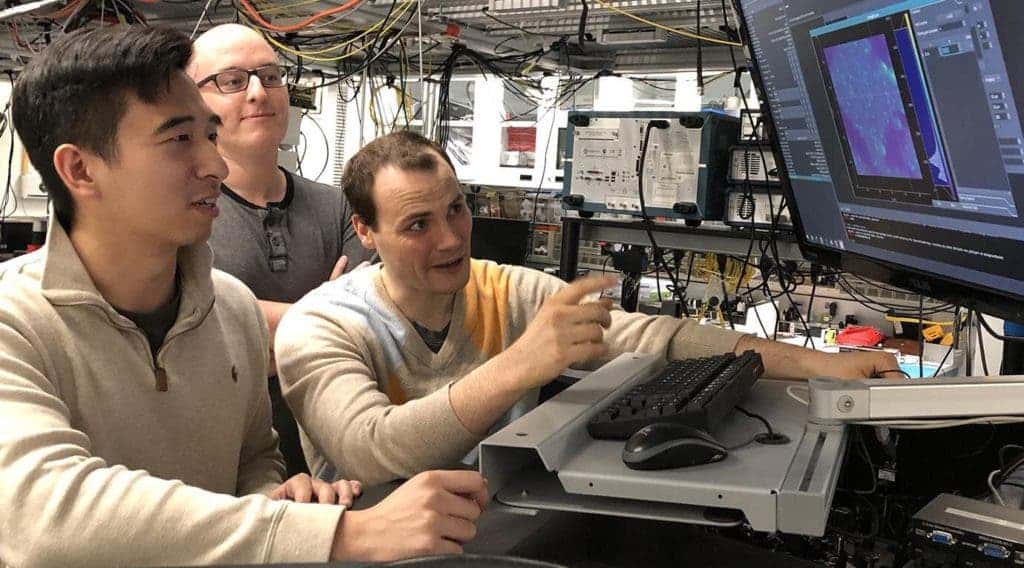
Quantum computing is hailed as the future holy grail of information processing. However, quantum computing machines are very complex, delicate, and cumbersome. They also require exotic materials such as superconducting metals or levitated atoms. But new developments demonstrated in two recently published studies may prove revolutionary — they suggest that quantum states can be controlled in regular, everyday devices.
Quantum mechanics in classical semiconductors
It’s difficult to grasp just how quantum computers work, but if we were to simplify things, the gist would be that digital computers require data to be encoded into binary digits (bits), each of which is always in one of two definite states (0 or 1), whereas quantum computers use qubits, also known as quantum bits.
A qubit is the quantum analog of the digital bit that encodes information in 1s and 0s. The crucial difference is that a quantum bit can exist in both states at the same time due to a quantum quirk called superposition.
It’s akin to saying that a switch is both on and off at the same time or that water is both flowing and not flowing through a pipe simultaneously — which, in day to day life, makes absolutely no sense, but in the quantum domain, few things are reasonable.
Two-qubits can perform operations on four values, three on eight values and so on in powers of two. Today’s computers have millions of transistors. Now imagine a quantum logic gate that works with millions of qubits. The computing force would be unheard of, allowing scientists to solve currently intractable problems and perform complex models that take longer than the age of the universe for today’s fastest supercomputers to process.
Although classical computing systems have always been thought of as under-equipped to read and maintain quantum states, scientists at the University of Chicago’s Pritzker School of Molecular Engineering showed that this isn’t necessarily true.
“The ability to create and control high-performance quantum bits in commercial electronics was a surprise,” said lead investigator David Awschalom, professor of molecular engineering at the University of Chicago. “These discoveries have changed the way we think about developing quantum technologies—perhaps we can find a way to use today’s electronics to build quantum devices.”
Awschalom and colleagues published a paper in the journal Science, demonstrating they could electrically control quantum states embedded in silicon carbide. Immediately, this opens the possibility of designing quantum computers based on traditional materials, which could vastly accelerate their development.
What’s more, quantum states in silicon carbide emit single particles of light with a wavelength near the telecommunications band.
“This makes them well suited to long-distance transmission through the same fiber-optic network that already transports 90 percent of all international data worldwide,” said Awschalom, who is also a senior scientist at Argonne National Laboratory and director of the Chicago Quantum Exchange.
In a second paper, which was published in Science Advances, the researchers were able to combine these light particles with existing electronics to make a “quantum FM radio”. They claim that just like the information that plays music in your car is transmitted through the air over long distances, so can quantum information be exchanged wirelessly.
One important challenge that researchers managed to overcome was quantum noise. Common semiconductor devices have impurities, which can scramble quantum information by adding noise to the electrical environment. This is why quantum research exclusively uses pure materials that are free of fluctuating fields. But, the researchers managed to eliminate noise in the quantum signal by employing one of the most basic electronics components — the diode, a one-way switch for current.
“In our experiments, we need to use lasers, which unfortunately jostle the electrons around. It’s like a game of musical chairs with electrons; when the light goes out everything stops, but in a different configuration,” said graduate student Alexandre Bourassa. “The problem is that this random configuration of electrons affects our quantum state. But we found that applying electric fields removes the electrons from the system and makes it much more stable.”
For decades, consumers have enjoyed the dividends of Moore’s Law — an empirical observation that states the number of transistors in an integrated circuit doubles every two years or so. This prediction has proven true ever since it was first proposed by American engineer Gordon Moore in 1965. However, there’s a physical limit to how many transistors you can cram into a chip — and in a decade we should all be feeling it. But, by integrating quantum mechanics with classical semiconductor technology, these new developments suggest that we might not only avoid Moore’s brick wall but scale computing power to incredible heights.
“This work brings us one step closer to the realization of systems capable of storing and distributing quantum information across the world’s fiber-optic networks,” Awschalom said. “Such quantum networks would bring about a novel class of technologies allowing for the creation of unhackable communication channels, the teleportation of single electron states and the realization of a quantum internet.”






